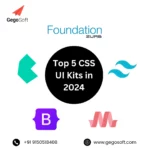One of the most fundamental aspects of SEO is technical SEO. You could have the best piece of content on a popular topic in your niche, but if your site has unresolved technical SEO issues, you’ll struggle to rank high in search engine result pages (SERPs). As a result, you must spend some time optimizing your website’s technical SEO.
Technical SEO
It is the process of optimizing your website’s crawling, indexing, and rendering phases to achieve higher search rankings. Technical SEO entails improving your website’s technical aspects to help it rank higher in search results. It is a broad field that encompasses a wide range of SEO topics, such as:
- XML sitemaps
- Crawling and indexing
- Mobile optimization
- Site speed
- Site structure
- SSL certificates
- Image SEO
- Internal and external links
- Canonical URLs
Best Technical SEO Tips
Try to Make Sure Your Website is Mobile-Friendly
It is understood that one of the most significant Google algorithm updates in 2015 was the preference for mobile-friendly, responsive websites. Several top websites were penalized in what was dubbed “Mobilegeddon” for not using a more mobile-friendly web template.
Actively Speed Up Your Website
Site speed is crucial and one makes no mistake about it. Google will impose a minor penalty on your website if it is slow and takes a long time to respond. That is, even if your content is of high quality for that topic, your website will rank lower in SERPs than it would if it had faster load times. This is a technical SEO aspect that you cannot afford to overlook.
Immensely Optimize Internal Links
An internal link is a hyperlink that directs users to another page on the same website. While internal links may not have the same impact on search rankings as external links, they are still important in helping search engines understand your website’s information hierarchy and establishing SEO-friendly site architecture.
So, what’s the simplest way to optimize the internal links on your website? Moz suggests using descriptive keywords in anchor text that provide a sense of the keywords the source page is attempting to target.
Add Your Main Keywords in Image Alt Text
Google can’t tell what’s in a picture. To determine what’s in an image, it instead uses metadata such as the image file name and image alt text. The alt text describes the appearance and function of an image on a page and is used within HTML code. Generally, the best practice for alt text is to keep it descriptive while making adequate use of the main keywords that you’re targeting. At the same time, make certain that you aren’t stuffing it with keywords.
Utilize Canonical URLs to Avoid Duplicate Content Issues
More precisely your top priority should always be to remove duplicate content from your website. Use an SEO tool, such as Semrush, to scan and fix duplicate content issues on your site. However, there are some instances where having duplicate content on your site is unavoidable. In such cases, canonical URLs should be used.
Canonical URLs are useful when copying a blog post from one website to another. They are particularly useful if you run an eCommerce website with hundreds of identical pages.
Search and Fix Broken Links on Your Site
It is enumerated that broken links are not only bad for SEO, but they can also degrade the user experience on your site. You don’t want any of your readers to be directed to a “404 not found” page. It actually creates a negative first impression, and the user might never return to your site. This is why you should check for broken links on your site regularly and fix them as they appear.
















